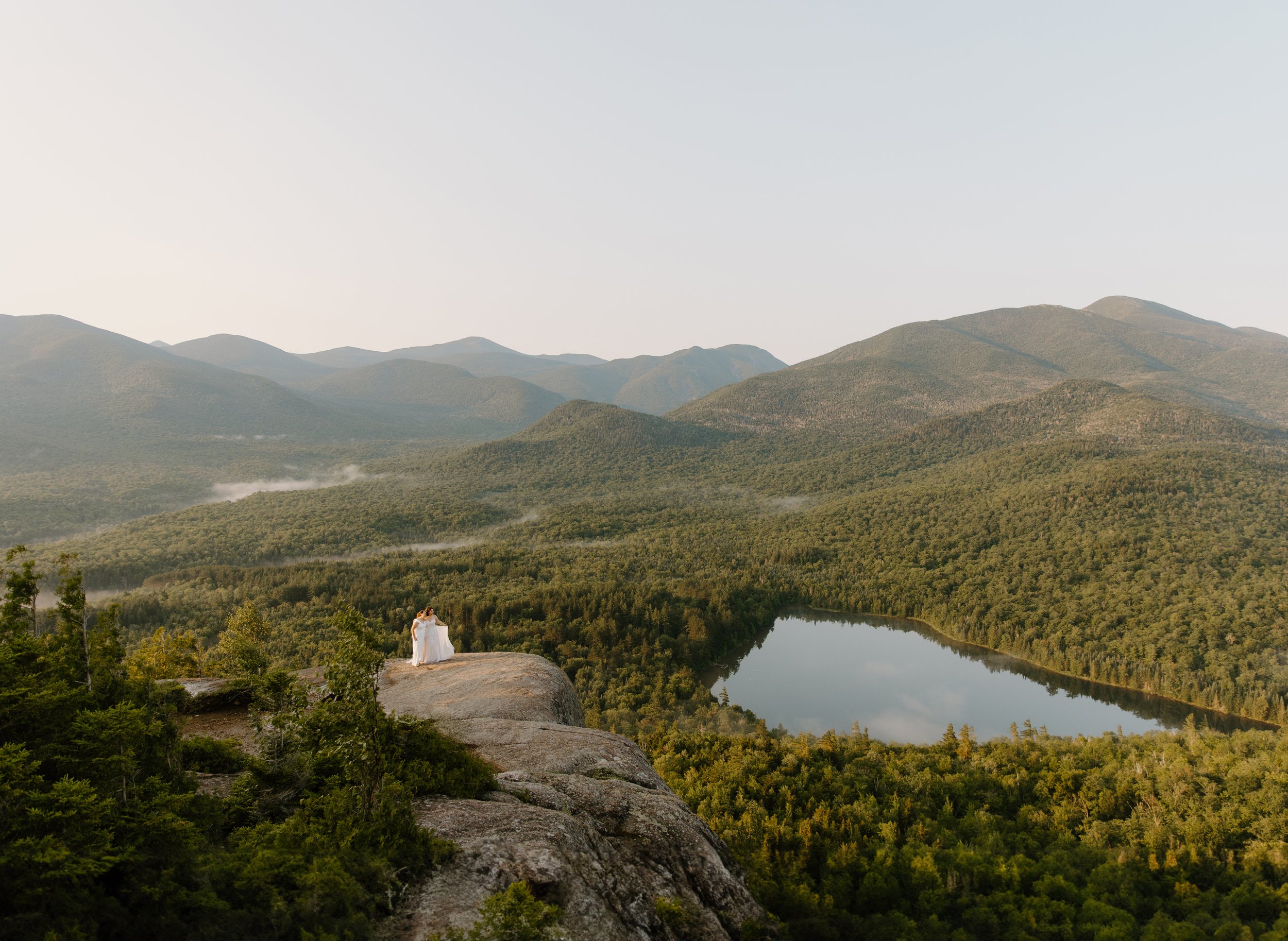How to Plan a Leave No Trace Elopement
Since you’ve landed on this page, chances are you’re researching an outdoor elopement day experience. Well first - huge congrats, you two! The fact that you’re planning a wedding day out in nature is so incredible and meaningful.
I first started photographing elopements because I truly love spending time outdoors, which is why I’m so excited to share this LNT guide with you. The fact that we are able to use & access public lands as a backdrop for elopements, adventure sessions and even just everyday recreation is such a huge privilege. With that comes a responsibility for us to keep that place looking amazing for both ourselves and others to continue to enjoy for many years to come.
During every single elopement that I help my couples plan, we follow Leave No Trace and its Seven Principles. Are you ready to plan your own? Let’s dive in.
The Leave No Trace Seven Principles
First, what is Leave No Trace? Essentially, LNT is a set of best practices that we should always follow when recreating in & enjoying the outdoors in order to protect the land. There are 7 principles at the very core of Leave No Trace to help us do this! They are:
Plan ahead and prepare.
Travel and camp on durable surfaces.
Dispose of waste properly.
Leave what you find.
Minimize campfire impacts (be careful with fire).
Respect wildlife.
Be considerate of other visitors.
(© 1999 by the Leave No Trace Center for Outdoor Ethics: LNT.org)
Let’s dig a little deeper into what this means for your elopement day…
#1 Plan ahead and prepare
Step one is simply to dig in and research your location, any regulations to follow, and begin preparing for the day. Begin with online research, but calling local park offices and seeking out knowledgeable vendors is also super helpful. This research and planning should include:
Learning about Leave No Trace & The Seven Principles (please see more detailed information on the LNT website)
Choose your location
Pick your date & hire your vendors
Get your marriage license
Get your location permit (if a permit is required for your chosen location)
Educate your guests on LNT & any area-specific regulations
Check trail conditions, download a trail map or an “offline maps” app
Pack accordingly for your elopement!
#2 Travel and camp on durable surfaces
Planning on hiking during your big day? Wandering into the mountains, a field, etc? Awesome! Staying on the marked trail is always the main goal, but when that’s not possible, staying on a durable surface is the next best thing. Here’s a guide to follow:
OK to go off-trail: Rock, sand, gravel, ice and snow
Sometimes OK to go off trail: Vegetation that isn’t fragile (groups should spread out while walking to avoid creating satellite trails)
Not OK to go off trail: Living soil (cryptobiotic crust), desert puddles and mud holes, fragile vegetation (such as moss, tundra, wildflowers).
#3 Dispose of waste properly
This refers to everything! If you bring it in, pack it out. I.e. champagne corks, food wrappers, waste of any kind, even flower petals from your bouquet. It’s essential to stay away from items like confetti, even if it’s labeled as “biodegradable.”
Some alternative options to confetti could be:
Bubbles
Ribbon sticks
Native leaves collected from the area of your ceremony
Snowballs
Sparklers
#4 Leave what you find
We want this location to remain enjoyable for other visitors… well, forever! Simply put, leave it the way you found it. And if there’s a detail you truly want to remember from this location, ask your photographer to document it for you.
#5 Minimize campfire impacts
Cozying up by a campfire at the end of your elopement day sounds amazing, right? It’s totally doable! But first, always check for fire bans in that area before having a campfire, using candles, fireworks, smoke bombs, or even sparklers.
When starting your campfire, only use designated fire pits. Also, only start a fire if there are no high winds and when there’s enough water nearby to drown it out completely. Lastly, make sure that that fire is totally, 100% put out before leaving! This means cool to the touch.
#6 Respect wildlife
Wildlife sightings on your elopement day are a pretty incredible experience! If it happens, make sure to only get photos from a safe distance. Wildlife can also be affected by those fuzzy guests you have along on the big day, so be sure to only bring dogs in places they are allowed, and then keep them on-leash or under control during. I always love having dogs come along - if that's important to you too, choose your location with them in mind!
Food is another major factor to consider. Don’t intentionally (or unintentionally!) feed wildlife. Especially in bear country, always make sure to have proper food storage (i.e. bear canisters).
#7 Be considerate of other visitors
You might be sharing your location with a few other visitors - and that’s ok! Since this space is for everyone to enjoy, be aware of the space your group is taking up—try not to block viewpoints, or cause passing hikers to veer off trail to walk around.
To get more privacy & seclusion on the big day, consider planning your elopement earlier in the day (sunrise makes for amazing photos!), during off-season or “shoulder season” when less visitors will be around, or even get married on a weekday.
Bonus tip: Social media awareness
Geotagging locations has become a hot topic in recent years, especially with the rise of outdoor elopements. Some scenic spots that were once a local secret are now completely overrun with visitors - which is detrimental to the long-term sustainability of that area.
When sharing your amazing elopement experience on social media, consider the negative impact of tagging that exact trail location publicly. Instead, you could tag a larger area (i.e. tag “Pisgah National Forest” instead of “Max Patch Trail”).




